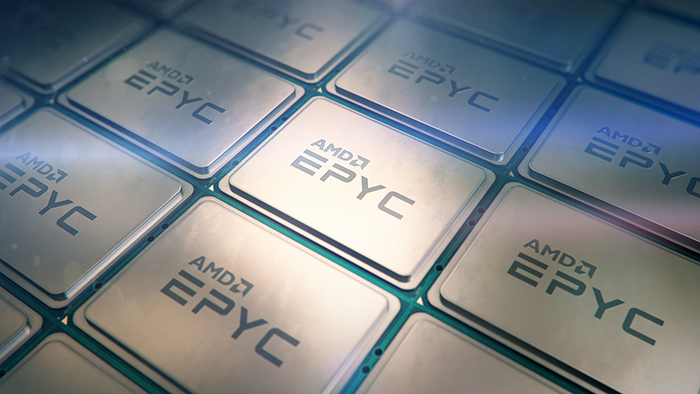64-core server processor promises to deliver exceptional performance for render farms and CFD clusters
AMD has given a first glimpse of its next generation EPYC server CPU codenamed “Rome”, which features up to 64 cores and 128 threads, double that of its first generation EPYC CPU.
Powered by the “Zen 2” processor core, “Rome” uses 7nm process technology to deliver ‘much higher performance and more CPU cores at the same power.’ It will be available for one and two socket servers, giving a potential 128 cores and 256 threads in total.
The new EPYC CPU should get the attention of architecture, engineering and design viz firms because it promises to deliver incredible performance in multi-threaded applications such as ray trace rendering and Computational Fluid Dynamics (CFD).
At the launch event in San Francisco this week, AMD demonstrated the performance gains one can expect by putting a single socket ‘Rome’ system up against competitive dual socket systems. The live demonstration featured a server with a single “Rome’ processor with 64 cores, a second server with two Intel Xeon 8180M processors, each with 28 cores, and a third server with two first generation AMD EPYC 7601 processors, each with 32 cores. Using the C-Ray ray tracing benchmark the ‘Rome’ system was 9% quicker than the Intel system and 2.5% quicker than the AMD EPYC 7601 system, despite it only using one CPU.
AMD was keen to point out that the prototype ‘Rome’ system was air cooled, ran at standard clock speeds and should deliver even better performance when the CPU officially launches in 2019.
While the emphasis is on Rome’s industry-leading 64 cores and number crunching capabilities, AMD told AEC Magazine that it would be releasing several different models more suited to workstation virtualisation with fewer cores and higher clock speeds that are needed to run CAD and other 3D applications.
“Rome” is fundamentally a server processor, designed for datacenters and well suited to clusters and render farms, but it is very likely that the ‘Zen 2’ technology on which it is based will also trickle down to the desktop.
First-generation EPYC evolved into Threadripper 2, which delivered 32 cores at high frequencies. This made it a great workstation processor for those who rely heavily on ray trace renderers like V-Ray and KeyShot and other multi-threaded applications (read our review here). If AMD does similar with EPYC 2 this can only be good news for viz-focused designers.
AMD was not the only firm this week to announce a new generation server CPU with lots of cores. On Monday, seemingly in an attempt to steal some of AMD’s thunder, Intel announced its forthcoming Cascade Lake Xeon CPU with 48 cores, 16 less than AMD’s ‘Rome’. Intel’s current flagship CPU is the 28 core Intel Xeon 8180M.
If you enjoyed this article, subscribe to AEC Magazine for FREE






